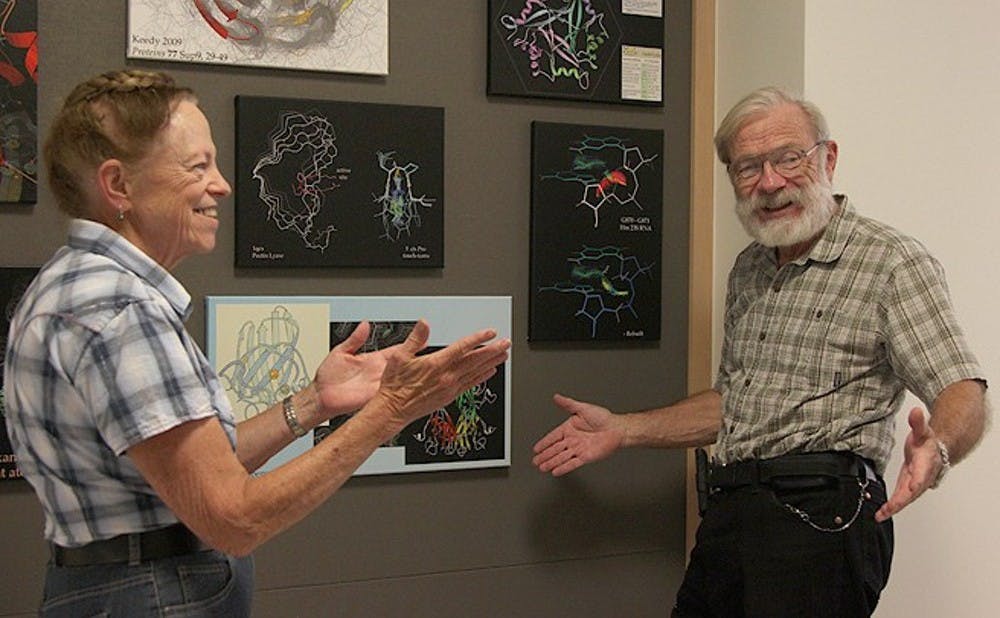If you’ve ever taken an introductory biology course, you’re probably familiar with intricate protein ribbon diagrams.
These diagrams were developed by Jane Richardson, James B. Duke professor of medicine, who will soon celebrate 50 years working here at the University.
These breakthrough models stemmed from years of work by both Richardson and her husband, David Richardson, professor of biochemistry. The two worked together in a lab at Massachusetts Institute of Technology and then joined Duke’s biochemistry department in 1969. Since then, the Richardsons have acted as a collective entity in propelling forward the field of structural biology.
Discovery first came when the Richardsons met David Davies, at the time a molecular biologist at the National Institutes of Health (NIH). He noted that his model of the structure of immunoglobulin was very similar to their own model of the enzyme superoxide dismutase. At this point, the Richardsons had already solved two of the 20 protein structures yet to be deciphered worldwide.
Through Davies, the Richardsons gained additional insight into the rules of protein structures, which eventually spurred Jane Richardson’s own drawings of proteins in three dimensions.
The Richardsons' work to map out protein structures has revolutionized science and medicine—proteins play a crucial role in every part of the body, from respiration to growth. Their complex interactions have been made far easier to visualize as a result of these diagrams.
In the midst of her scientific pursuits, Richardson completed a master’s degree in philosophy and credits this as having played a major role in her scientific pursuits.
“[Philosophy] teaches you not just to do critical thinking, but really to push it and always question an assumption,” Richardson said.
Philosophy ultimately led Richardson back to science—a field she has had a fervent passion for since her youth. As a child, she was an amateur astronomer with a strong interest in math and science. After completing her philosophy studies, Richardson went back to science, joining the lab where Dave was then working. The lab’s work was far from standard at the time.
“As amateurs, we were trying to do a protein structure. When we started, there was only hemoglobin and myoglobin… So without any connection to those people, we sort of reverse-engineered how to do it," Richardson said. "In seven years, we got a little structure that would be really trivial today, but it's still really complicated and cool and it really got us hooked on that, and we've been looking at protein and RNA and 3D structures ever since.”
Because of the far-reaching impacts of their work, Jane and Dave Richardson often reflect on the implications and somewhat daunting power of these drawings.
“When you’re doing something like this, you’re making decisions about what’s important, what you should be showing. I find that kind of scary, Dave and I do," Richardson said. "People are seeing these structures through our eyes sort-of, but most people don’t really realize that."
Since coming to Duke, she has observed a number of changes at Duke and in Durham. However, the biggest changes she has perceived are in the way things are done in the scientific community. Richardson revealed that it is often challenging to deal with the increased time pressure and competition associated with research today.
Though even with greater time constraints and pressure of her job, Richardson still finds tremendous excitement in her field and the work that she does.
“Our field is in the middle of another revolution at the moment that we’re trying to help with. And so, it’s never settled down and become unexciting at all,” Richardson said.
Get The Chronicle straight to your inbox
Sign up for our weekly newsletter. Cancel at any time.

